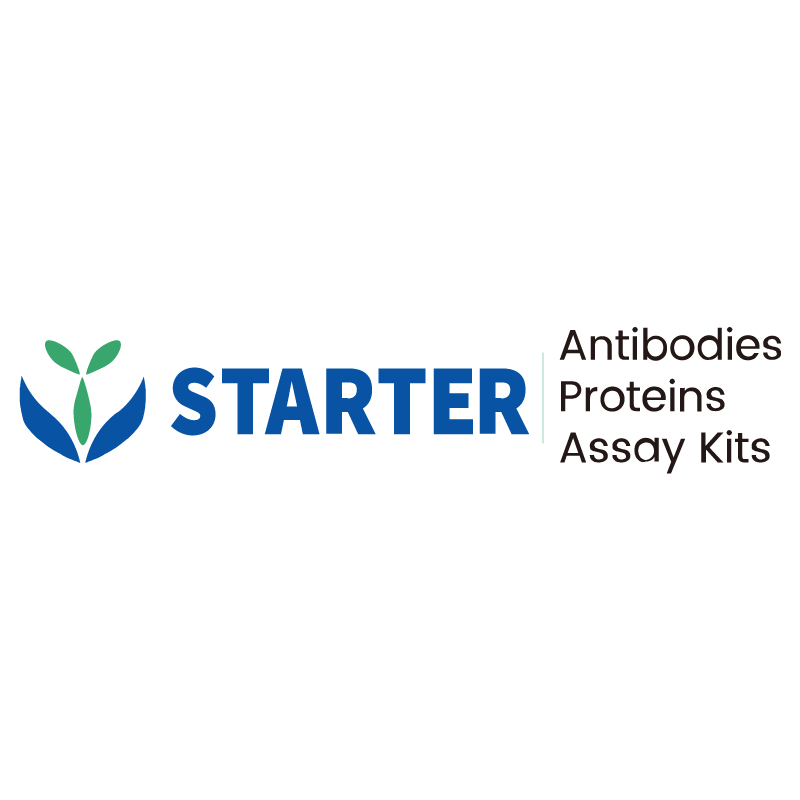WB result of CD36 Recombinant Rabbit mAb
Primary antibody: CD36 Recombinant Rabbit mAb at 1/4000 dilution
Lane 1: mouse brain lysate 20 µg
Lane 2: mouse heart lysate 20 µg
Lane 3: mouse lung lysate 20 µg
Negative control: mouse brain lysate
Secondary antibody: Goat Anti-rabbit IgG, (H+L), HRP conjugated at 1/10000 dilution
Predicted MW: 53 kDa
Observed MW: 85 kDa
Product Details
Product Details
Product Specification
| Host | Rabbit |
| Antigen | CD36 |
| Synonyms | Platelet glycoprotein 4; Glycoprotein IIIb; PAS IV; PAS-4; Platelet glycoprotein IV |
| Immunogen | Synthetic Peptide |
| Location | Cell membrane, Apical cell membrane |
| Accession | A4D1B1 |
| Clone Number | S-1028-127 |
| Antibody Type | Recombinant mAb |
| Isotype | IgG |
| Application | WB, IHC-P, IF |
| Reactivity | Ms, Rt |
| Positive Sample | mouse heart, mouse lung, rat heart, rat spleen |
| Purification | Protein A |
| Concentration | 2 mg/ml |
| Conjugation | Unconjugated |
| Physical Appearance | Liquid |
| Storage Buffer | PBS, 40% Glycerol, 0.05% BSA, 0.03% Proclin 300 |
| Stability & Storage | 12 months from date of receipt / reconstitution, -20 °C as supplied |
Dilution
| application | dilution | species |
| WB | 1:4000 | Ms, Rt |
| IHC-P | 1:500 | Ms |
| IF | 1:400 | Ms, Rt |
Background
CD36, also known as platelet glycoprotein IV or fatty acid translocase, is a type 2 cell surface scavenger receptor expressed in various immune and non-immune cells, including macrophages, platelets, endothelial cells, and adipocytes. It functions as both a signaling receptor and a fatty acid transporter, binding ligands such as long-chain fatty acids (LCFAs), oxidized low-density lipoprotein (oxLDL), thrombospondin-1, and anionic phospholipids. In lipid metabolism, CD36 facilitates the uptake and utilization of LCFAs in tissues like the heart, liver, and skeletal muscle, contributing to energy homeostasis. It also plays a key role in the development of atherosclerosis by mediating the uptake of oxLDL by macrophages, leading to foam cell formation and inflammation. CD36 is involved in immune regulation and inflammation, acting as a co-receptor with TLR4 to recognize pathogen-associated molecular patterns (PAMPs) and damage-associated molecular patterns (DAMPs), thereby activating pro-inflammatory signaling pathways such as NF-κB and MAPK. Additionally, it is implicated in platelet activation and thrombus formation, contributing to cardiovascular diseases. In cancer, CD36 is associated with tumor progression and immune modulation. It can regulate cytokine production and antigen presentation in the tumor microenvironment, influencing tumor growth and immune evasion. Given its diverse functions, CD36 is emerging as a potential therapeutic target for diseases such as atherosclerosis, diabetes, and cancer.
Picture
Picture
Western Blot
WB result of CD36 Recombinant Rabbit mAb
Primary antibody: CD36 Recombinant Rabbit mAb at 1/4000 dilution
Lane 1: rat brain lysate 20 µg
Lane 2: rat spleen lysate 20 µg
Lane 3: rat heart lysate 20 µg
Negative control: rat brain lysate
Secondary antibody: Goat Anti-rabbit IgG, (H+L), HRP conjugated at 1/10000 dilution
Predicted MW: 53 kDa
Observed MW: 85 kDa
Immunohistochemistry
IHC shows positive staining in paraffin-embedded mouse cardiac muscle. Anti-CD36 antibody was used at 1/500 dilution, followed by a HRP Polymer for Mouse & Rabbit IgG (ready to use). Counterstained with hematoxylin. Heat mediated antigen retrieval with Tris/EDTA buffer pH9.0 was performed before commencing with IHC staining protocol.
IHC shows positive staining in paraffin-embedded mouse lung. Anti-CD36 antibody was used at 1/500 dilution, followed by a HRP Polymer for Mouse & Rabbit IgG (ready to use). Counterstained with hematoxylin. Heat mediated antigen retrieval with Tris/EDTA buffer pH9.0 was performed before commencing with IHC staining protocol.
IHC shows positive staining in paraffin-embedded mouse spleen. Anti-CD36 antibody was used at 1/500 dilution, followed by a HRP Polymer for Mouse & Rabbit IgG (ready to use). Counterstained with hematoxylin. Heat mediated antigen retrieval with Tris/EDTA buffer pH9.0 was performed before commencing with IHC staining protocol.
Immunofluorescence
IF shows positive staining in paraffin-embedded mouse spleen. Anti-CD36 antibody was used at 1/400 dilution (Green) and incubated overnight at 4°C. Goat polyclonal Antibody to Rabbit IgG - H&L (Alexa Fluor® 488) was used as secondary antibody at 1/1000 dilution. Counterstained with DAPI (Blue). Heat mediated antigen retrieval with EDTA buffer pH9.0 was performed before commencing with IF staining protocol.
IF shows positive staining in paraffin-embedded rat spleen. Anti-CD36 antibody was used at 1/400 dilution (Green) and incubated overnight at 4°C. Goat polyclonal Antibody to Rabbit IgG - H&L (Alexa Fluor® 488) was used as secondary antibody at 1/1000 dilution. Counterstained with DAPI (Blue). Heat mediated antigen retrieval with EDTA buffer pH9.0 was performed before commencing with IF staining protocol.


